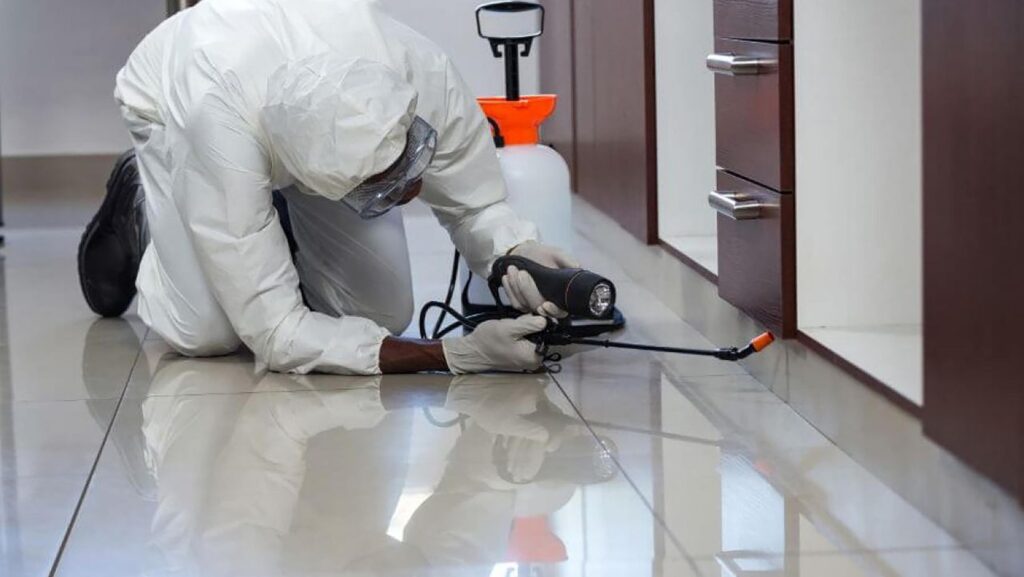Utah homeowners and growers are always searching for effective ways to protect their spaces from unwanted pests. Ultrasonic repellers emit high-frequency sound waves intended to drive away pests without chemicals or traps, providing a potentially safer approach for homes and some agricultural settings. As pest populations and varieties differ across regions like Utah, understanding which insects or animals respond best to these devices is essential.
That’s why it’s important to choose ultrasonic pest control solutions in Utah that are tested against the specific pests common to the area. Unlike general repellents sold nationwide, region-specific options are better suited to deal with pests like Utah’s desert-dwelling rodents or seasonal insect swarms. Some homeowners try chemical sprays or traps, but those can leave behind residue or require frequent upkeep. In comparison, ultrasonic devices offer a low-maintenance approach that works silently in the background—though results can still vary based on placement and pest type.
Key Takeaways
- Ultrasonic devices are most likely to affect rodents and some insects.
- Effectiveness in Utah varies by species and environment.
- Ultrasound methods offer chemical-free pest management options.
How Ultrasonic Technology Impacts Pest Populations in Utah
Ultrasonic pest repellers are marketed as a chemical-free approach to pest management. Their effectiveness can vary depending on the targeted pest species, environmental factors, and product placement.
Mechanisms of Ultrasonic Repellents
Ultrasonic pest repellers emit sound waves at frequencies above the range of human hearing, typically around 20 kHz and higher. These devices are designed to induce discomfort, disrupt communication, or sometimes interfere with the movement of certain pests such as rodents and insects.
Pests exposed to continuous ultrasonic noise may experience stress or disorientation. This can cause them to avoid treated areas, leading to a short-term reduction in visible activity or minor shifts in infestation patterns.
Most Affected Pest Species
Ultrasonic repellents target a range of household pests. In Utah, the focus is on insects and small vertebrates that are common in urban and rural homes. Some devices claim to repel rodents, including mice and rats, as well as various insect species.

Evidence suggests that rodents may be marginally deterred by ultrasonic frequencies, though this impact is typically temporary as they become accustomed over time. Certain insects such as cockroaches or ants are less consistently affected, and results can be unpredictable across different species and environments.
Manufacturers occasionally cite pest groups like spiders or silverfish as targets, but robust, controlled studies are lacking. The effectiveness against larger outdoor pests like Mormon crickets or katydid, notable across the Great Basin and Intermountain West, is minimal. These species are less likely to be dissuaded by ultrasonic sound due to their diverse sensory systems and outdoor habitat.
Environmental and Agricultural Considerations of Ultrasonic Pest Control
Ultrasonic pest control affects not only targeted pests but also agricultural efficiency, environmental health, and local regulatory practices in Utah. Different impacts emerge depending on how these devices are deployed in agricultural settings, across ecosystems, and in coordination with regional policy frameworks.
Broader Environmental Impacts and Regulatory Guidance
Ultrasonic pest control avoids introducing toxic pollutants or chemical residues into soil and water, helping maintain water quality on farms. Unlike many pesticides that are regulated under acts such as the Resource Conservation and Recovery Act, these electronic devices offer an alternative with minimal hazardous waste. They do not contribute to municipal wastewater treatment issues or polychlorinated biphenyls accumulation.
However, there is no universal code or standard for ultrasonic device use in agriculture, and few specific design guidelines exist for deployment in complex environments like health care facilities or mobile units. This gap can lead to inconsistent adoption and confusion among end users. In Utah, regulatory agencies like the Utah Department of Agriculture remind users to avoid misleading claims and ensure devices are used as part of integrated pest management.
Environmental management efforts also consider bioremediation and the effects of energy use. Ultrasonic units consume power, but their footprint remains limited compared to common chemical approaches. Regulators provide early warning reports on unproven pest control methods while encouraging observation of clean air act requirements and effluent limitations guidelines where applicable.
Regional Differences and Cross-Border Influences
Environmental conditions and regulatory environments in Utah are influenced by its proximity to Nevada and unique Great Basin ecosystems, including rare species such as the Great Basin bristlecone pine. Pests in these regions may respond differently to ultrasonic frequencies due to habitat, climate, and regional biodiversity. This means site-specific considerations drive deployment choices.
Gold mining and agriculture both shape land management in border regions, often requiring cooperation in pest control strategies. Ultrasonic technology may support resource conservation where pesticide runoff threatens shared water resources management. However, device effectiveness can diminish over uneven terrain or where large distances require multiple units.
Cross-border policy alignment is still developing. Nevada and Utah may have varying guidance on new pest control technologies, including when e-manifest tracking or compliance documentation is needed for agricultural operations. Ongoing dialogue between states and the federal government is shaping a more unified approach, particularly as precision agriculture and water conservation needs intersect.
Conclusion
Ultrasonic pest control devices primarily target rodents and some insects, but their actual effectiveness varies widely by species and environmental factors.

Research suggests that while certain pests like rodents and some spiders might be deterred by ultrasonic sound, the claims for effectiveness are often mixed and not consistently supported by independent studies. Users in Utah should consider multiple pest management strategies, as ultrasonic technology alone may not deliver reliable or long-term results in every situation.
